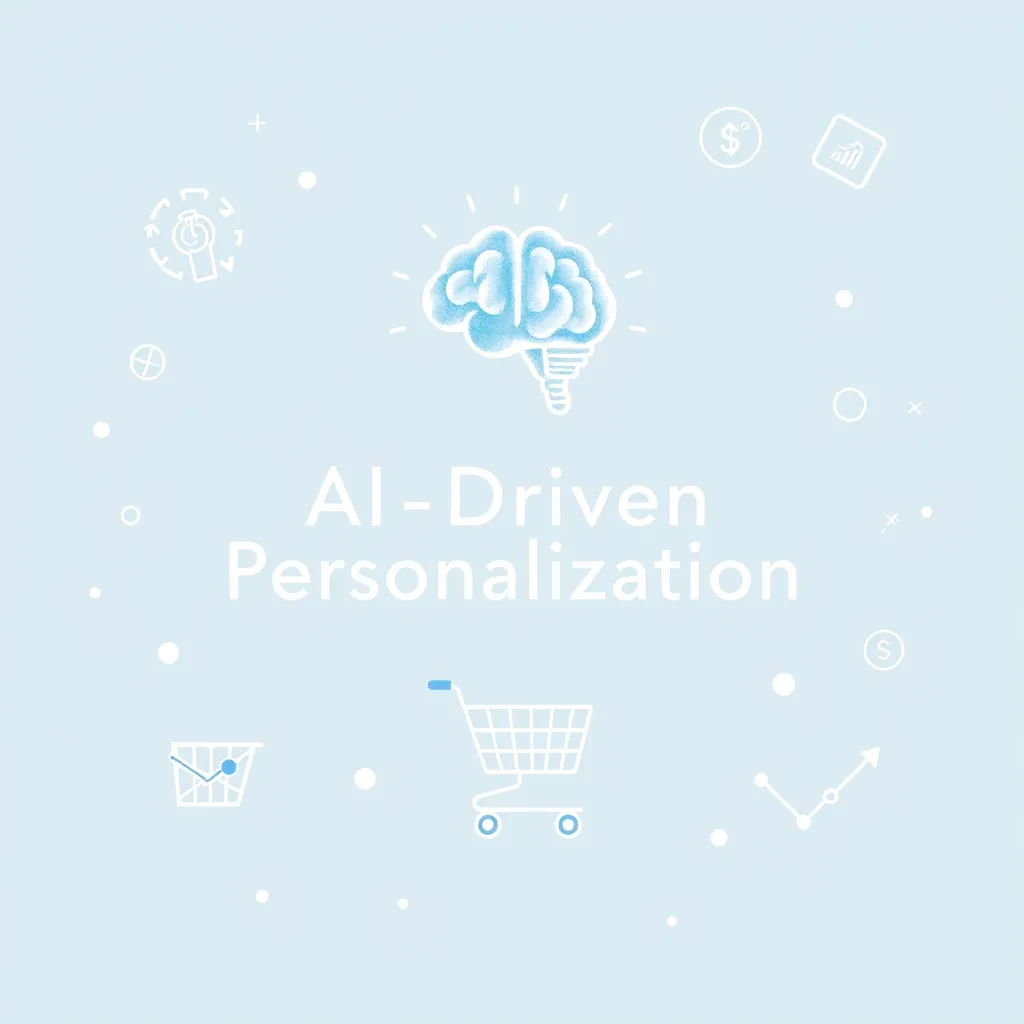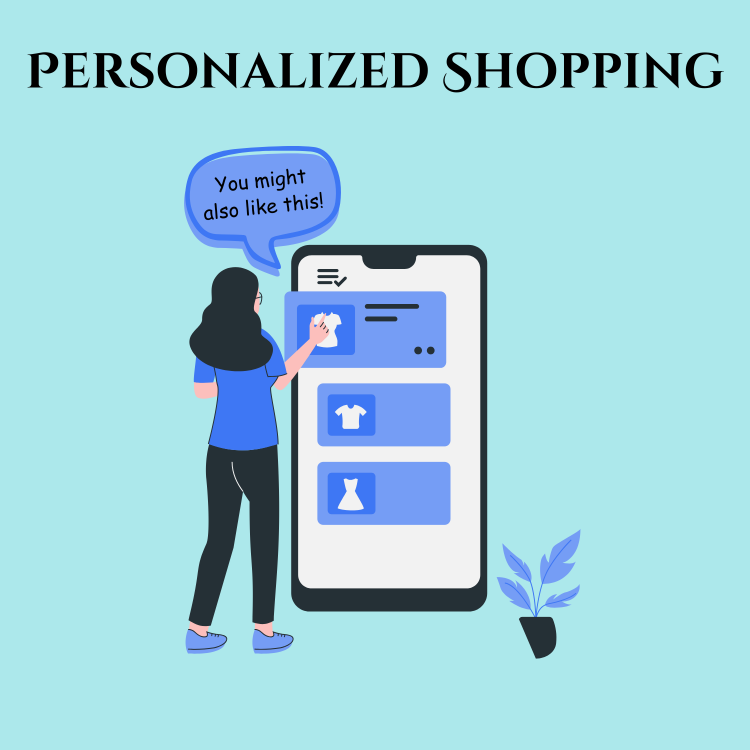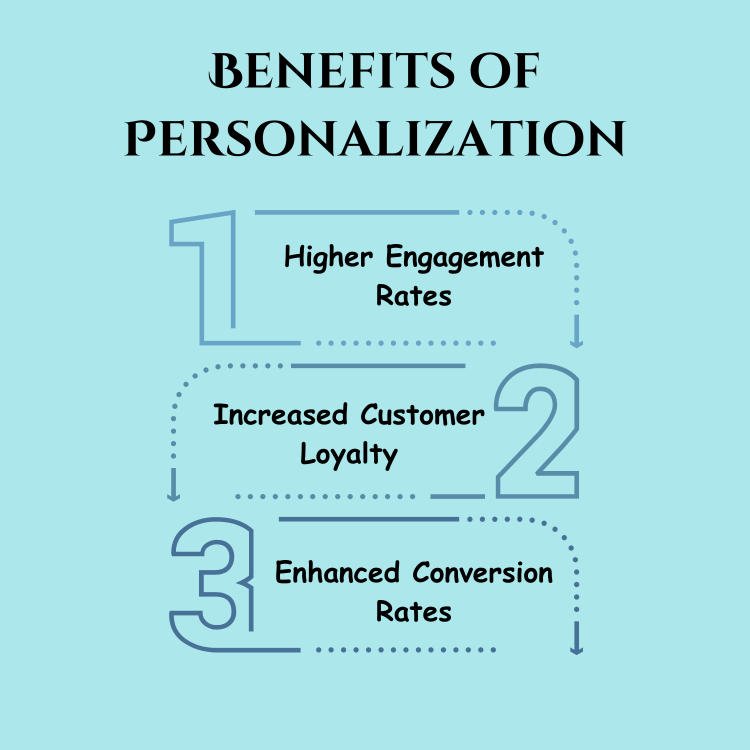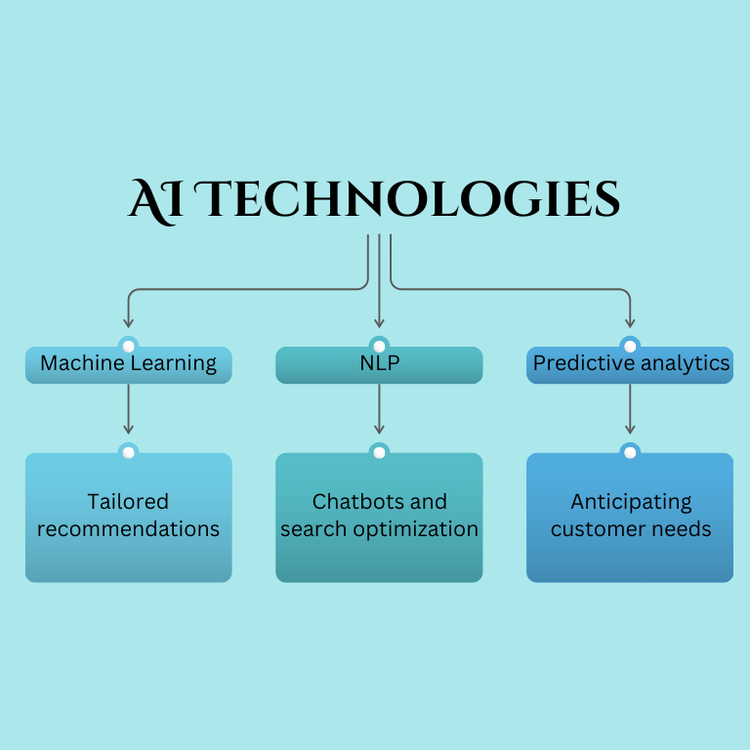Elevating E-commerce: AI-Driven Personalization for Exceptional Customer Experiences [2025]
Revolutionize your e-commerce strategy with AI-driven personalization. Boost engagement, build loyalty, and drive sales with tailored customer experiences

In today’s competitive e-commerce world, customers expect tailored experiences that feel personal and relevant. AI-driven personalization empowers businesses to meet these expectations by analyzing data in real time to deliver the right products and messages to the right customers. This article explores how AI is transforming e-commerce personalization, its benefits, and how you can implement it to build stronger customer connections and boost sales.
Table of Contents
- Why Personalization Matters in E-commerce
- The Role of AI in E-commerce Personalization
- Implementing AI-Driven Personalization in Your E-commerce Strategy
- Future Trends in AI Personalization
- Measuring the Success of Personalization Strategies
- Frequently Asked Questions (FAQs)
- Summary
Why Personalization Matters in E-commerce

Understanding Personalized Shopping Experiences
Personalized shopping experiences are about tailoring every interaction to the individual needs, preferences, and behaviors of your customers. In e-commerce, this means presenting the right products, offers, and messages to the right customer at the right time. Unlike traditional one-size-fits-all approaches, personalization leverages customer data and advanced tools, such as artificial intelligence (AI), to make every experience unique and meaningful.
Key elements of personalization in e-commerce include:
- Tailored Recommendations: Suggesting products based on browsing history or purchase patterns.
- Dynamic Pricing: Offering price adjustments based on customer segments or purchase behavior.
- Targeted Promotions: Sending personalized offers or discounts to specific customer groups.
Benefits of Customer Personalization
Investing in personalization creates a win-win scenario for businesses and customers alike. Here are the most notable benefits:
- Higher Engagement Rates: Customers are more likely to interact with your website, emails, and ads when they find content relevant to their needs.
- Increased Customer Loyalty: By consistently addressing individual preferences, businesses can build trust and long-term relationships. Personalization signals to customers that their needs are understood and valued.
- Enhanced Conversion Rates: Personalization reduces friction in the customer journey. Showing products that match a shopper’s intent makes the decision-making process faster and easier, leading to higher sales.

The Role of AI in E-commerce Personalization
AI Technologies Powering Personalization
Artificial Intelligence (AI) has transformed how e-commerce businesses approach personalization. By leveraging vast amounts of data, AI tools can deliver hyper-relevant, real-time experiences for customers. Here are the core AI technologies driving this change:
-
Machine Learning (ML)
ML algorithms analyze customer data—such as browsing habits, purchase history, and demographics—to predict preferences. These insights enable businesses to recommend products or services that align with individual interests. For example, an ML algorithm might suggest a skincare product based on previous purchases of similar items. -
Natural Language Processing (NLP)
NLP powers chatbots, virtual assistants, and search functionalities, allowing businesses to interact with customers conversationally. It enhances user experience by understanding customer queries, offering tailored responses, and even suggesting products directly through chat interfaces. -
Predictive Analytics
Predictive analytics uses historical data and patterns to forecast customer behavior. It can anticipate what a customer might need next or identify potential churn risks, helping businesses to take proactive steps like offering discounts or personalized recommendations.

Real-World Examples of AI Personalization
AI personalization isn’t a theoretical concept—it’s actively shaping customer experiences across leading e-commerce platforms. Here are a few real-world examples:
-
Amazon’s Recommendation Engine
Amazon’s AI-powered recommendation system analyzes customer purchases, browsing history, and similar-user data to suggest products. -
Netflix-style AI for E-commerce
Inspired by Netflix’s success with personalized streaming suggestions, some e-commerce platforms now use similar technology to curate shopping experiences. For example, a clothing retailer might recommend outfits based on weather forecasts and user preferences. -
Live-Selling Platforms like TikTok
TikTok Shop integrates AI to personalize live-selling experiences, suggesting relevant products to viewers based on their engagement patterns during live streams. This ensures customers see items that match their interests without having to browse endlessly.
Implementing AI-Driven Personalization in Your E-commerce Strategy
Key Steps to Get Started
Integrating AI-driven personalization into your e-commerce strategy can feel daunting, but a structured approach makes it manageable. Here are the essential steps to successfully implement AI personalization:
-
Collect Customer Data Ethically and Transparently
Data is the backbone of AI personalization. Gather customer data from various touchpoints, such as website interactions, email engagement, and purchase history. However, ensure compliance with data privacy regulations like GDPR and CCPA. Use clear communication and obtain customer consent to build trust while collecting information. -
Integrate AI-Powered Tools into Your E-commerce Platform
Choose AI solutions that align with your business needs. These tools can handle tasks like dynamic pricing, product recommendations, and predictive analytics without requiring extensive technical expertise. -
Segment Customers for Tailored Marketing and Sales Strategies
Use AI to divide your audience into distinct segments based on behaviors, preferences, and demographics. For example:- High-spending customers might receive early access to sales.
- First-time buyers could be offered discounts to encourage repeat purchases.
- Infrequent customers might be targeted with retention-focused campaigns.
-
Test and Optimize Your Personalization Efforts
Implement A/B testing to evaluate how well your AI-powered personalization efforts are working. Measure metrics like conversion rates, click-through rates, and average order value to refine strategies.
Overcoming Challenges in AI Personalization
While AI-powered personalization offers numerous benefits, businesses must address common challenges to ensure its success:
-
Addressing Data Privacy Concerns
AI-driven personalization relies on customer data, making privacy a significant concern. Ensure compliance with privacy laws and implement robust security measures to protect sensitive information. Transparency about how data is used will also build customer trust. -
Avoiding Over-Reliance on Automation
While AI can automate many personalization tasks, it’s crucial to maintain a human touch. Balance AI insights with human oversight to ensure campaigns resonate authentically with customers. -
Managing Implementation Costs
AI personalization requires investment in technology and resources. Start small by using scalable tools and focusing on high-impact areas like product recommendations or email personalization.
Future Trends in AI Personalization
Hyper-Personalization and Predictive Selling
As AI technology continues to evolve, hyper-personalization is becoming the next frontier in e-commerce. This approach goes beyond basic personalization by leveraging advanced data insights to predict and meet customer needs in real-time. Key advancements include:
-
Dynamic Content Personalization: AI will enable websites and apps to adapt their layouts, product recommendations, and messaging dynamically based on a customer’s browsing behavior and preferences. For example, a returning customer might see a homepage tailored to their past purchases and current trends.
-
Predictive Selling: Predictive analytics will identify what customers are likely to buy next, even before they know it themselves. By analyzing browsing patterns, purchase history, and external factors like seasonal trends, AI can proactively suggest products that match a customer’s needs.
Cross-Channel Personalization
The future of AI personalization isn’t confined to e-commerce websites. It’s about delivering consistent, tailored experiences across all customer touchpoints:
-
Integration with Physical Stores: AI will bridge the gap between online and offline shopping. For instance, retailers might use customer data from online purchases to recommend complementary items during in-store visits.
-
Omnichannel Consistency: Customers expect seamless transitions between platforms, whether they’re browsing on a mobile app, engaging on social media, or shopping in-store. AI tools will ensure personalized experiences remain consistent across channels.
To find out the difference between omnichannel and multichannel selling, read our article here.
AI-Powered Loyalty Programs
AI will revolutionize loyalty programs by creating tailored rewards and incentives. For example:
- Predictive analytics can identify customers at risk of churning and offer personalized discounts to re-engage them.
- Reward tiers can dynamically adjust based on individual customer value, encouraging repeat purchases.
AI in Visual and Voice Search
Emerging technologies like visual and voice search are set to transform how customers interact with e-commerce platforms:
- Visual Search: Customers can upload images to find similar products, enhancing the discovery process.
- Voice Search: AI-powered virtual assistants will understand nuanced customer queries and provide personalized product suggestions in real time.
Measuring the Success of Personalization Strategies
To ensure AI-driven personalization delivers value, you need to track specific metrics that reflect its impact on customer experience and business outcomes. Here’s how to measure the success of your personalization efforts:
Key Metrics to Track
-
Conversion Rates
- Measure how often personalized interactions lead to purchases.
- A/B testing can help compare conversion rates between personalized and non-personalized strategies to quantify the impact of AI personalization.
-
Average Order Value (AOV)
- Track whether personalized recommendations or upsell opportunities increase the average value of customer orders.
- Example: Suggesting complementary items, like a phone case when a customer buys a smartphone.
-
Customer Retention Rates
- Monitor whether personalization improves customer loyalty and repeat purchases.
- Personalized loyalty programs or tailored post-purchase communications can encourage customers to return.
-
Click-Through Rates (CTR)
- Assess how often customers engage with personalized product recommendations or emails.
- High CTRs indicate that your AI algorithms are accurately predicting customer preferences.
-
Net Promoter Score (NPS)
- Use surveys to gauge customer satisfaction and willingness to recommend your brand to others.
- Positive feedback on personalization efforts can validate your strategy.
-
Revenue from Personalized Campaigns
- Compare revenue generated from campaigns or product suggestions driven by AI personalization to those using traditional approaches.
Tools for Measuring Personalization Success
- Analytics Platforms: Use tools like Google Analytics or integrated e-commerce analytics to track metrics such as AOV, CTR, and conversions.
- Customer Feedback Tools: Implement surveys or review platforms to gather qualitative feedback on personalized experiences.
- AI Insights Dashboards: Platforms like OneCart provide advanced reporting features that help you measure the impact of personalization on customer behavior and sales performance.
To gauge sales performance through sales reports, have a look at our article here.
Benchmarking and Continuous Improvement
- Set benchmarks for each metric based on industry standards or historical performance.
- Regularly analyze data to identify areas for improvement.
- Optimize strategies through A/B testing and experimentation, refining how AI tools deliver personalization.
Frequently Asked Questions (FAQs)
1. How does AI personalization differ from traditional methods?
AI personalization uses advanced algorithms to analyze customer data in real time, enabling dynamic and precise customization of recommendations, offers, and experiences. Traditional methods often rely on manual segmentation and static rules, making them less adaptive to changing customer behaviors.
2. What are the best AI tools for e-commerce personalization?
Leading tools for AI-driven personalization include:
- OneCart: Integrates inventory, sales, and personalization features to deliver tailored customer experiences.
- Dynamic Yield: Focuses on real-time personalization across web and mobile platforms.
- Algolia: Optimizes search results and recommendations based on customer preferences.
3. How does personalization impact customer trust?
Personalization enhances trust by showing customers that you understand their needs and preferences. However, transparency in how you collect and use data is essential. Always comply with privacy regulations like GDPR or CCPA to maintain credibility.
4. What type of data is required for AI personalization?
Key data includes:
- Customer demographics
- Browsing and purchase history
- Behavioral patterns (e.g., cart abandonment or frequent searches)
- Preferences gathered through surveys or feedback
5. How can AI personalization be implemented across multiple channels?
AI tools can create a unified profile for each customer by integrating data from all touchpoints, such as websites, mobile apps, email campaigns, and physical stores. This ensures consistent and personalized experiences across every channel.
6. What are the potential pitfalls of AI personalization?
- Over-reliance on Automation: Neglecting human oversight can result in irrelevant or impersonal recommendations.
- Data Privacy Concerns: Mishandling customer data can damage trust and lead to regulatory issues.
- Implementation Costs: Initial setup may require significant investment, but many scalable tools minimize this challenge.
7. How quickly can businesses see results from AI personalization?
Results vary depending on implementation scale and strategy, but businesses often notice improvements in engagement and sales within the first few months. Tools like OneCart provide analytics to track performance and ROI early on.
Summary
By leveraging advanced technologies like machine learning, predictive analytics, and natural language processing, businesses can deliver highly tailored shopping experiences that drive engagement, loyalty, and revenue.
Key takeaways:
- Personalization enhances customer engagement and increases conversion rates.
- AI tools like recommendation engines, predictive selling, and dynamic content customization empower businesses to meet individual customer needs at scale.
- Measuring metrics like conversion rates, average order value, and retention helps track the success of personalization efforts.
- Implementing AI personalization is accessible to businesses of all sizes with scalable tools like OneCart.
Personalization is not just about making sales—it’s about building lasting customer relationships by showing that your business understands their unique preferences and values their loyalty.
Get started today with a free trial and see how OneCart can transform your business.